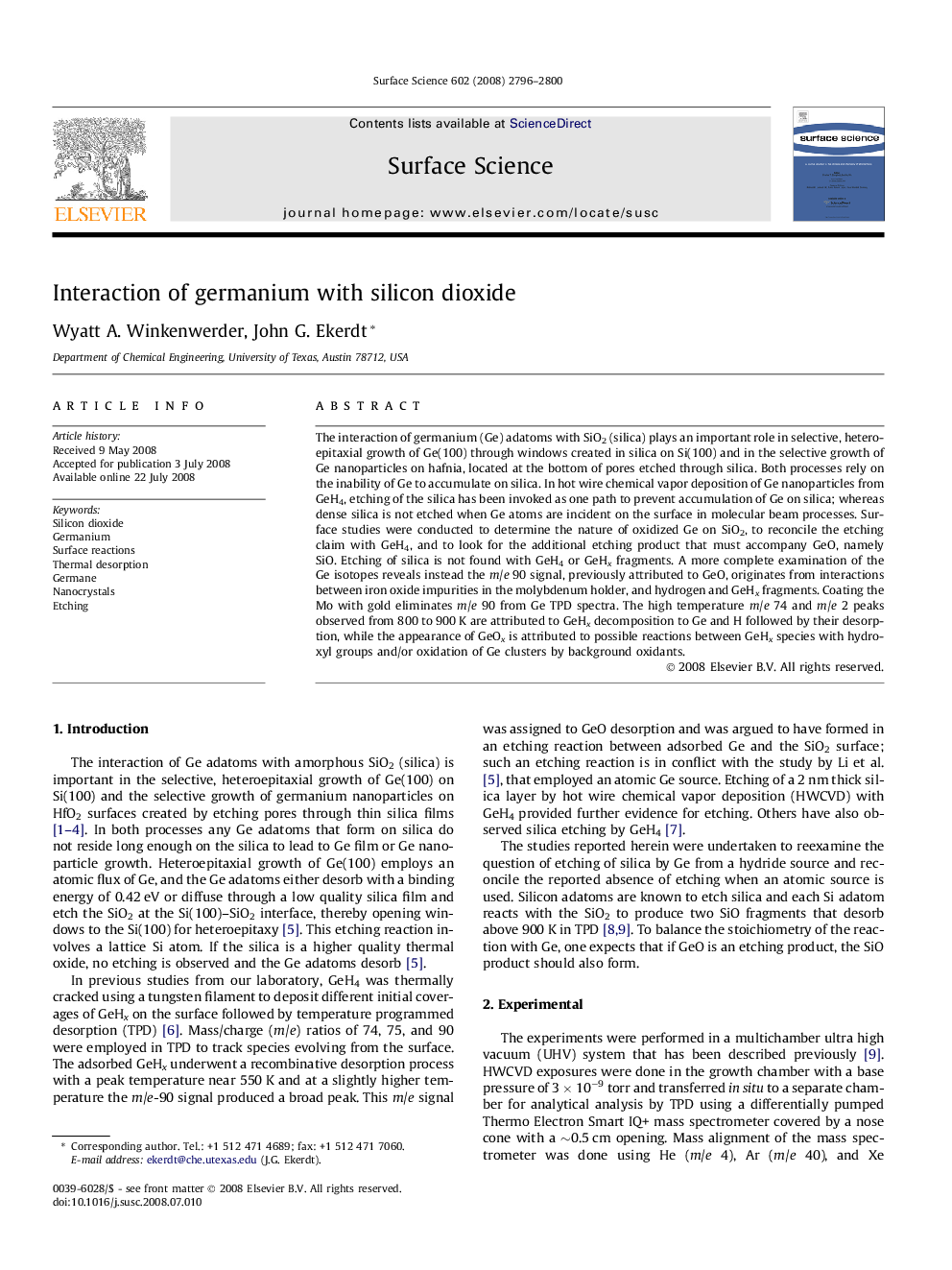| Article ID | Journal | Published Year | Pages | File Type |
|---|---|---|---|---|
| 5424371 | Surface Science | 2008 | 5 Pages |
Abstract
The interaction of germanium (Ge) adatoms with SiO2 (silica) plays an important role in selective, heteroepitaxial growth of Ge(100) through windows created in silica on Si(100) and in the selective growth of Ge nanoparticles on hafnia, located at the bottom of pores etched through silica. Both processes rely on the inability of Ge to accumulate on silica. In hot wire chemical vapor deposition of Ge nanoparticles from GeH4, etching of the silica has been invoked as one path to prevent accumulation of Ge on silica; whereas dense silica is not etched when Ge atoms are incident on the surface in molecular beam processes. Surface studies were conducted to determine the nature of oxidized Ge on SiO2, to reconcile the etching claim with GeH4, and to look for the additional etching product that must accompany GeO, namely SiO. Etching of silica is not found with GeH4 or GeHx fragments. A more complete examination of the Ge isotopes reveals instead the m/e 90 signal, previously attributed to GeO, originates from interactions between iron oxide impurities in the molybdenum holder, and hydrogen and GeHx fragments. Coating the Mo with gold eliminates m/e 90 from Ge TPD spectra. The high temperature m/e 74 and m/e 2 peaks observed from 800 to 900Â K are attributed to GeHx decomposition to Ge and H followed by their desorption, while the appearance of GeOx is attributed to possible reactions between GeHx species with hydroxyl groups and/or oxidation of Ge clusters by background oxidants.
Related Topics
Physical Sciences and Engineering
Chemistry
Physical and Theoretical Chemistry
Authors
Wyatt A. Winkenwerder, John G. Ekerdt,
